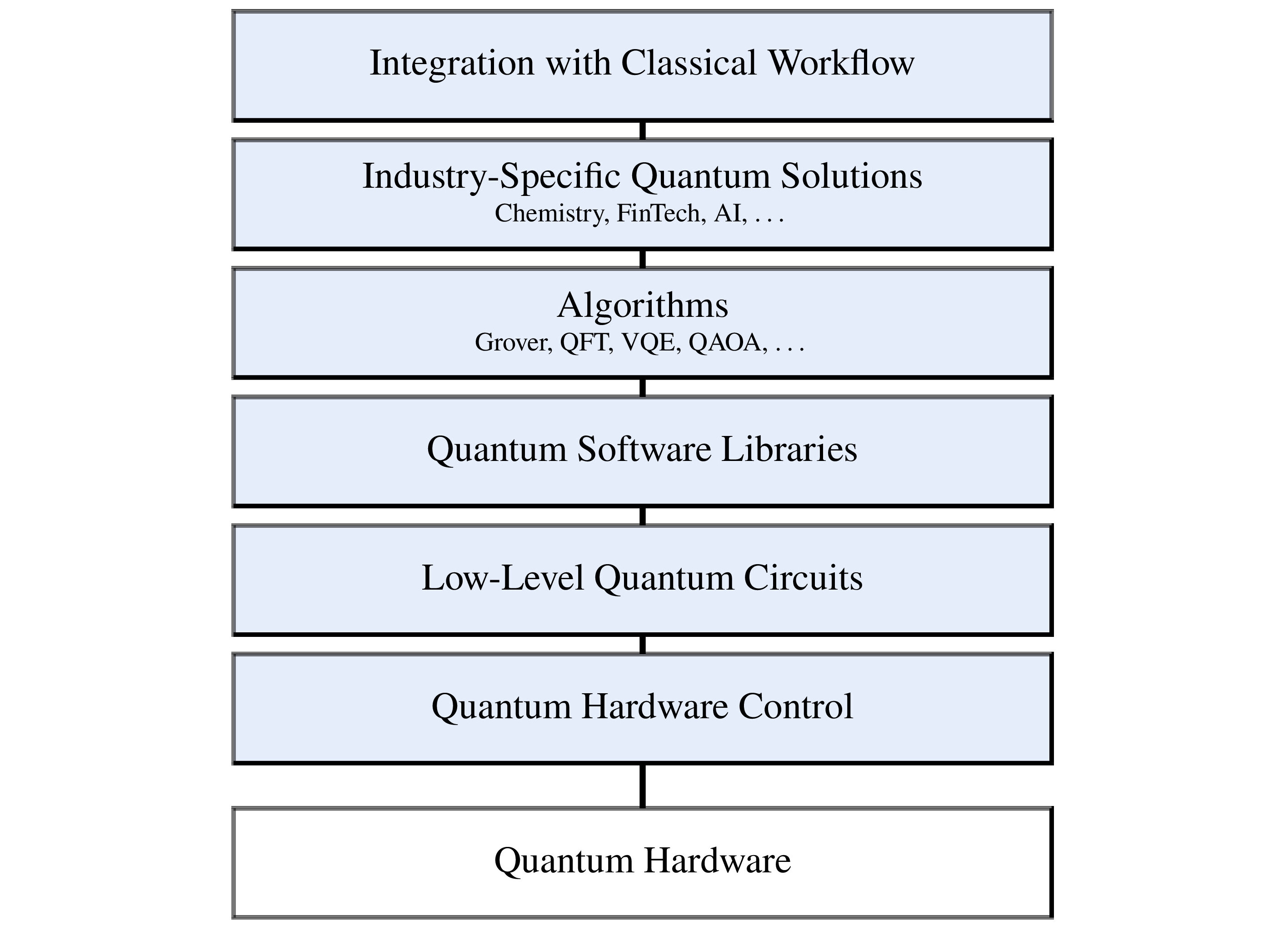Questions about the Future
We can only see a short distance ahead, but we can see plenty there that needs to be done.
Alan Turing
218
How will quantum computing evolve over the coming years and decades? It’s critical not to say that quantum computing will do this or that, but rather may. Until someone does this or that, it’s speculation, hype, or a work in progress.
Via a series of motivating questions, I give you a framework to check the progress of the full software, hardware, and systems stack shown in Figure 14.1. These questions also deal with how, where, and when you might start using, teaching, or learning about quantum computing.
The state of the art will be changing rapidly. Returning to these questions and their answers every few months will help you gauge what academia and the industry have done and why it is significant. They will allow you to understand whether quantum is ready for you and if you are ready for quantum.


